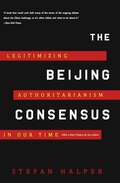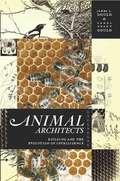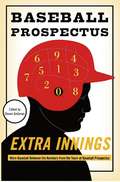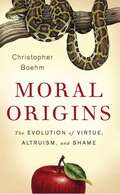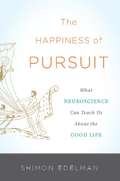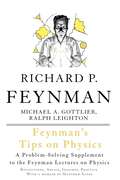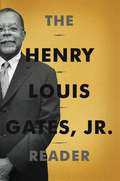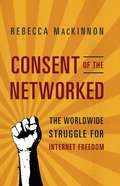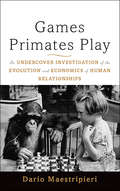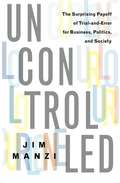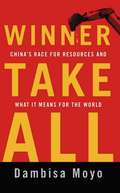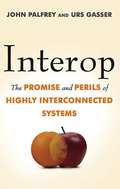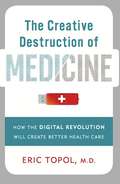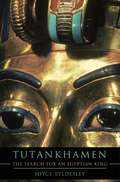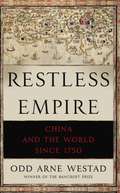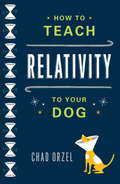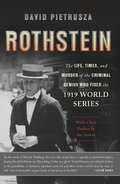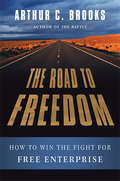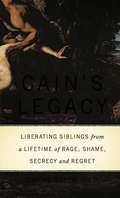- Table View
- List View
The Beijing Consensus: Legitimizing Authoritarianism in Our Time
by Stefan HalperBeijing presents a clear and gathering threat to Washington-but not for the reasons you think. China's challenge to the West stems from its transformative brand of capitalism and an entirely different conception of the international community.Taking us on a whirlwind tour of China in the world-from dictators in Africa to oligarchs in Southeast Asia to South American strongmen-Halper demonstrates that China's illiberal vision is rapidly replacing that of the so-called Washington Consensus. Instead of promoting democracy through economic aid, as does the West, China offers no-strings-attached gifts and loans, a policy designed to build a new Beijing Consensus.The autonomy China offers, together with the appeal of its illiberal capitalism, have become the dual engines for the diffusion of power away from the West. The Beijing Consensus is the one book to read to understand this new Great Game in all its complexity.
Animal Architects: Building and the Evolution of Intelligence
by James L. Gould Carol Grant GouldAnimal behavior has long been a battleground between the competing claims of nature and nurture, with the possible role of cognition in behavior as a recent addition to this debate. There is an untapped trove of behavioral data that can tell us a great deal about how the animals draw from these neural strategies: The structures animals build provide a superb window on the workings of the animal mind. Animal Architects examines animal architecture across a range of species, from those whose blueprints are largely innate (such as spiders and their webs) to those whose challenging structures seem to require intellectual insight, planning, and even aesthetics (such as bowerbirds' nests, or beavers' dams). Beginning with instinct and the simple homes of solitary insects, James and Carol Gould move on to conditioning; the "cognitive map” and how it evolved; and the role of planning and insight. Finally, they reflect on what animal building tells us about the nature of human intelligence-showing why humans, unlike many animals, need to build castles in the air.
Extra Innings: More Baseball Between the Numbers from the Team at Baseball Prospectus
by The Baseball ProspectusIn 1996, a brassy young team of fans produced a guide to baseball statistics. Printed on a photocopier, its distribution, which was in the low hundreds, was limited to friends, family, and die-hard stat heads. Sixteen years later, the Baseball Prospectus annual regularly hits best-seller lists and has become an indispensable guide for the serious fan. In Extra Innings, the team at Baseball Prospectus integrates statistics, interviews, and analysis to deliver twenty arguments about today&’s game. In the tradition of their seminal book, Baseball Between the Numbers, they take on everything from steroids to the amateur draft. They probe the impact of managers on the game. They explain the critical art of building a bullpen. In an era when statistics matter more than ever, Extra Innings is an essential volume for every baseball fan.
Extra Innings: More Baseball Between the Numbers from the Team at Baseball Prospectus
by The Baseball ProspectusIn 1996, a brassy young team of fansproduced a guide to baseball statistics.Printed on a photocopier, its distribution,which was in the low hundreds, was limited tofriends, family, and die-hard stat heads. Sixteenyears later, the Baseball Prospectus annualregularly hits best-seller lists and has becomean indispensable guide for the serious fan. In Extra Innings, the team at Baseball Prospectusintegrates statistics, interviews, and analysis todeliver twenty arguments about today's game.In the tradition of their seminal book, BaseballBetween the Numbers, they take on everything fromsteroids to the amateur draft. They probe theimpact of managers on the game. They explainthe critical art of building a bullpen. In an erawhen statistics matter more than ever, Extra Inningsis an essential volume for every baseball fan.
Moral Origins: The Evolution of Virtue, Altruism, and Shame
by Christopher BoehmFrom the age of Darwin to the present day, biologists have been grappling with the origins of our moral sense. Why, if the human instinct to survive and reproduce is "selfish," do people engage in self-sacrifice, and even develop ideas like virtue and shame to justify that altruism? Many theories have been put forth, some emphasizing the role of nepotism, others emphasizing the advantages of reciprocation or group selection effects. But evolutionary anthropologist Christopher Boehm finds existing explanations lacking, and in Moral Origins, he offers an elegant new theory.Tracing the development of altruism and group social control over 6 million years, Boehm argues that our moral sense is a sophisticated defense mechanism that enables individuals to survive and thrive in groups. One of the biggest risks of group living is the possibility of being punished for our misdeeds by those around us. Bullies, thieves, free-riders, and especially psychopaths--those who make it difficult for others to go about their lives--are the most likely to suffer this fate. Getting by requires getting along, and this social type of selection, Boehm shows, singles out altruists for survival. This selection pressure has been unique in shaping human nature, and it bred the first stirrings of conscience in the human species. Ultimately, it led to the fully developed sense of virtue and shame that we know today.A groundbreaking exploration of the evolution of human generosity and cooperation, Moral Origins offers profound insight into humanity's moral past--and how it might shape our moral future.
Moral Origins: The Evolution of Virtue, Altruism, and Shame
by Christopher BoehmFrom the age of Darwin to the present day, biologists have been grappling with the origins of our moral sense. Why, if the human instinct to survive and reproduce is "selfish," do people engage in self-sacrifice, and even develop ideas like virtue and shame to justify that altruism? Many theories have been put forth, some emphasizing the role of nepotism, others emphasizing the advantages of reciprocation or group selection effects. But evolutionary anthropologist Christopher Boehm finds existing explanations lacking, and in Moral Origins, he offers an elegant new theory. Tracing the development of altruism and group social control over 6 million years, Boehm argues that our moral sense is a sophisticated defense mechanism that enables individuals to survive and thrive in groups. One of the biggest risks of group living is the possibility of being punished for our misdeeds by those around us. Bullies, thieves, free-riders, and especially psychopaths -- those who make it difficult for others to go about their lives -- are the most likely to suffer this fate. Getting by requires getting along, and this social type of selection, Boehm shows, singles out altruists for survival. This selection pressure has been unique in shaping human nature, and it bred the first stirrings of conscience in the human species. Ultimately, it led to the fully developed sense of virtue and shame that we know today.A groundbreaking exploration of the evolution of human generosity and cooperation, Moral Origins offers profound insight into humanity's moral past -- and how it might shape our moral future.
The Happiness of Pursuit: What Neuroscience Can Teach Us About the Good Life
by Shimon EdelmanWhen fishing for happiness, catch and release. Remember these seven words-they are the keys to being happy. So says Shimon Edelman, an expert on psychology and the mind. In The Happiness of Pursuit, Edelman offers a fundamental understanding of pleasure and joy via the brain. Using the concept of the mind as a computing device, he unpacks how the human brain is highly active, involved in patterned networks, and constantly learning from experience. As our brains predict the future through pursuit of experience, we are rewarded both in real time and in the long run. Essentially, as Edelman discovers, it's the journey, rather than the destination, that matters. The idea that cognition is computation-the brain is a machine-is nothing new of course. But, as Edelman argues, the mind is actually a bundle of ongoing computations, essentially, the brain being one of many possible substrates that can support them. Edelman makes the case for these claims by constructing a conceptual toolbox that offers readers a glimpse of the computations underlying the mind's faculties: perception, motivation and emotions, action, memory, thinking, social cognition, learning and language. It is this collection of tools that enables us to discover how and why happiness happens.An informative, accessible, and witty tour of the mind, The Happiness of Pursuit offers insights to a thorough understanding of what minds are, how they relate to each other and to the world, and how we can make the best of it all.
Feynman's Tips on Physics: Reflections, Advice, Insights, Practice
by Richard P. Feynman Michael A GottliebFeynman's Tips on Physics is a delightful collection of Richard P. Feynman's insights and an essential companion to his legendary Feynman Lectures on Physics With characteristic flair, insight, and humor, Feynman discusses topics physics students often struggle with and offers valuable tips on addressing them. Included here are three lectures on problem-solving and a lecture on inertial guidance omitted from The Feynman Lectures on Physics. An enlightening memoir by Matthew Sands and oral history interviews with Feynman and his Caltech colleagues provide firsthand accounts of the origins of Feynman's landmark lecture series. Also included are incisive and illuminating exercises originally developed to supplement The Feynman Lectures on Physics, by Robert B. Leighton and Rochus E. Vogt.Feynman's Tips on Physics was co-authored by Michael A. Gottlieb and Ralph Leighton to provide students, teachers, and enthusiasts alike an opportunity to learn physics from some of its greatest teachers, the creators of The Feynman Lectures on Physics.
Feynman's Tips on Physics: Reflections, Advice, Insights, Practice
by Richard P. Feynman Michael A GottliebFeynman's Tips on Physics is a delightful collection of Richard P. Feynman's insights and an essential companion to his legendary Feynman Lectures on Physics With characteristic flair, insight, and humor, Feynman discusses topics physics students often struggle with and offers valuable tips on addressing them. Included here are three lectures on problem-solving and a lecture on inertial guidance omitted from The Feynman Lectures on Physics. An enlightening memoir by Matthew Sands and oral history interviews with Feynman and his Caltech colleagues provide firsthand accounts of the origins of Feynman's landmark lecture series. Also included are incisive and illuminating exercises originally developed to supplement The Feynman Lectures on Physics, by Robert B. Leighton and Rochus E. Vogt.Feynman's Tips on Physics was co-authored by Michael A. Gottlieb and Ralph Leighton to provide students, teachers, and enthusiasts alike an opportunity to learn physics from some of its greatest teachers, the creators of The Feynman Lectures on Physics.
The Henry Louis Gates, Jr. Reader
by Henry Louis GatesEducator, writer, critic, intellectual, film-maker-Henry Louis Gates, Jr., has been widely praised as being one of America's most prominent and prolific scholars. In what will be an essential volume, The Henry Louis Gates, Jr., Reader collects three decades of writings from his many fields of interest and expertise.From his earliest work of literary-historical excavation in 1982, through his current writings on the history and science of African American genealogy, the essays collected here follow his path as historian, theorist, canon-builder, and cultural critic, revealing a thinker of uncommon breadth whose work is uniformly guided by the drive to uncover and restore a history that has for too long been buried and denied.An invaluable reference, The Henry Louis Gates, Jr., Reader will be a singular reflection of one of our most gifted minds.
Darwin's Devices: What Evolving Robots Can Teach Us About the History of Life and the Future of Technology
by John LongWhat happens when we let robots play the game of life? The challenge of studying evolution is that the history of life is buried in the past—we can&’t witness the dramatic events that shaped the adaptations we see today. But biorobotics expert John Long has found an ingenious way to overcome this problem: he creates robots that look and behave like extinct animals, subjects them to evolutionary pressures, lets them compete for mates and resources, and mutates their &‘genes&’. In short, he lets robots play the game of life. In Darwin&’s Devices, Long tells the story of these evolving biorobots—how they came to be, and what they can teach us about the biology of living and extinct species. Evolving biorobots can replicate creatures that disappeared from the earth long ago, showing us in real time what happens in the face of unexpected environmental challenges. Biomechanically correct models of backbones functioning as part of an autonomous robot, for example, can help us understand why the first vertebrates evolved them. But the most impressive feature of these robots, as Long shows, is their ability to illustrate the power of evolution to solve difficult technological challenges autonomously—without human input regarding what a workable solution might be. Even a simple robot can create complex behavior, often learning or evolving greater intelligence than humans could possibly program. This remarkable idea could forever alter the face of engineering, design, and even warfare. An amazing tour through the workings of a fertile mind, Darwin&’s Devices will make you rethink everything you thought you knew about evolution, robot intelligence, and life itself.
Consent of the Networked: The Worldwide Struggle For Internet Freedom
by Rebecca MacKinnonThe Internet was going to liberate us, but in truth it has not. For every story about the web&’s empowering role in events such as the Arab Spring, there are many more about the quiet corrosion of civil liberties by companies and governments using the same digital technologies we have come to depend upon. Sudden changes in Facebook&’s features and privacy settings have exposed identities of protestors to police in Egypt and Iran. Apple removes politically controversial apps at the behest of governments as well as for its own commercial reasons. Dozens of Western companies sell surveillance technology to dictatorships around the world. Google struggles with censorship demands from governments in a range of countries—many of them democracies—as well as mounting public concern over the vast quantities of information it collects about its users. In Consent of the Networked, journalist and Internet policy specialist Rebecca MacKinnon argues that it is time to fight for our rights before they are sold, legislated, programmed, and engineered away. Every day, the corporate sovereigns of cyberspace make decisions that affect our physical freedom—but without our consent. Yet the traditional solution to unaccountable corporate behavior—government regulation—cannot stop the abuse of digital power on its own, and sometimes even contributes to it.A clarion call to action, Consent of the Networked shows that it is time to stop arguing over whether the Internet empowers people, and address the urgent question of how technology should be governed to support the rights and liberties of users around the world.
Games Primates Play: An Undercover Investigation of the Evolution and Economics of Human Relationships
by Dario MaestripieriMost humans don't realize that when they exchange emails with someone, anyone, they are actually exhibiting certain unspoken rules about dominance and hierarchy. The same rules regulate the exchange of grooming behavior in rhesus macaques or chimpanzees. Interestingly, some of the major aspects of human nature have profound commonalities with our ape ancestors: the violence of war, the intensity of love, the need to live together.While we often assume that our behavior in everyday situations reflects our unique personalities, the choices we freely make, or the influences of our environment, we rarely consider that others behave in these situations in almost the exact the same way as we do. In Games Primates Play, primatologist Dario Maestripieri examines the curious unspoken customs that govern our behavior. These patterns and customs appear to be motivated by free will, yet they are so similar from person to person, and across species, that they reveal much more than our selected choices.Games Primates Play uncovers our evolutionary legacy: the subtle codes that govern our behavior are the result of millions of years of evolution, predating the emergence of modern humans. To understand the rules that govern primate games and our social interactions, Maestripieri arms readers with knowledge of the scientific principles that ethologists, psychologists, economists, and other behavioral scientists have discovered in their quest to unravel the complexities of behavior. As he realizes, everything from how we write emails to how we make love is determined by the legacy of our primate roots and the conditions that existed so long ago.An idiosyncratic and witty approach to our deep and complex origins, Games Primates Play reveals the ways in which our primate nature drives so much of our lives.
Uncontrolled: The Surprising Payoff of Trial-and-Error for Business, Politics, and Society
by Jim ManziHow do we know which social and economic policies work, which should be continued, and which should be changed? Jim Manzi argues that throughout history, various methods have been attempted-except for controlled experimentation. Experiments provide the feedback loop that allows us, in certain limited ways, to identify error in our beliefs as a first step to correcting them. Over the course of the first half of the twentieth century, scientists invented a methodology for executing controlled experiments to evaluate certain kinds of proposed social interventions. This technique goes by many names in different contexts (randomized control trials, randomized field experiments, clinical trials, etc.). Over the past ten to twenty years this has been increasingly deployed in a wide variety of contexts, but it remains the red-haired step child of modern social science. This is starting to change, and this change should be encouraged and accelerated, even though the staggering complexity of human society creates severe limits to what social science could be realistically expected to achieve. Randomized trials have shown, for example, that work requirements for welfare recipients have succeeded like nothing else in encouraging employment, that charter school vouchers have been successful in increasing educational attainment for underprivileged children, and that community policing has worked to reduce crime, but also that programs like Head Start and Job Corps, which might be politically attractive, fail to attain their intended objectives. Business leaders can also use experiments to test decisions in a controlled, low-risk environment before investing precious resources in large-scale changes - the philosophy behind Manzi's own successful software company.In a powerful and masterfully-argued book, Manzi shows us how the methods of science can be applied to social and economic policy in order to ensure progress and prosperity.
Winner Take All: China's Race for Resources and What It Means for the World
by Dambisa MoyoCommodities permeate virtually every aspect of modern daily living, but for all their importance-their breadth, their depth, their intricacies, and their central role in daily life-few people who are not economists or traders know how commodity markets work. Almost every day, newspaper headlines and media commentators scream warnings of impending doom--shortages of arable land, clashes over water, and political conflict as global demand for fossil fuels outstrips supply. The picture is bleak, but our grasp of the details and the macro shifts in commodities markets remain blurry.Winner Take All is about the commodity dynamics that the world will face over the next several decades. In particular, it is about the implications of China's rush for resources across all regions of the world. The scale of China's resource campaign for hard commodities (metals and minerals) and soft commodities (timber and food) is among the largest in history. To be sure, China is not the first country to launch a global crusade to secure resources. From Britain's transcontinental operations dating back to the end of the 16th century, to the rise of modern European and American transnational corporations between the mid 1860's and 1870's, the industrial revolution that powered these economies created a voracious demand for raw materials and created the need to go far beyond their native countries.So too is China's resource rush today. Although still in its early stages, already the breadth of China's operation is awesome, and seemingly unstoppable. China's global charge for commodities is a story of China's quest to secure its claims on resource assets, and to guarantee the flow of inputs needed to continue to drive economic development. Moyo, an expert in global commodities markets, explains the implications of China's resource grab in a world of diminishing resources.
Interop: The Promise and Perils of Highly Interconnected Systems
by John Palfrey Urs GasserIn Interop, technology experts John Palfrey and Urs Gasser explore the immense importance of interoperability-the standardization and integration of technology-and show how this simple principle will hold the key to our success in the coming decades and beyond.The practice of standardization has been facilitating innovation and economic growth for centuries. The standardization of the railroad gauge revolutionized the flow of commodities, the standardization of money revolutionized debt markets and simplified trade, and the standardization of credit networks has allowed for the purchase of goods using money deposited in a bank half a world away. These advancements did not eradicate the different systems they affected; instead, each system has been transformed so that it can interoperate with systems all over the world, while still preserving local diversity.As Palfrey and Gasser show, interoperability is a critical aspect of any successful system-and now it is more important than ever. Today we are confronted with challenges that affect us on a global scale: the financial crisis, the quest for sustainable energy, and the need to reform health care systems and improve global disaster response systems. The successful flow of information across systems is crucial if we are to solve these problems, but we must also learn to manage the vast degree of interconnection inherent in each system involved. Interoperability offers a number of solutions to these global challenges, but Palfrey and Gasser also consider its potential negative effects, especially with respect to privacy, security, and co-dependence of states; indeed, interoperability has already sparked debates about document data formats, digital music, and how to create successful yet safe cloud computing. Interop demonstrates that, in order to get the most out of interoperability while minimizing its risks, we will need to fundamentally revisit our understanding of how it works, and how it can allow for improvements in each of its constituent parts.In Interop, Palfrey and Gasser argue that there needs to be a nuanced, stable theory of interoperability-one that still generates efficiencies, but which also ensures a sustainable mode of interconnection. Pointing the way forward for the new information economy, Interop provides valuable insights into how technological integration and innovation can flourish in the twenty-first century.
The Creative Destruction of Medicine: How the Digital Revolution Will Create Better Health Care
by Eric TopolHow genomics, big data, and digital technology are revolutionizing every aspect of medicine, from physical exams to drug prescriptions to organ transplantsMobile technology has transformed our lives, and personal genomics is revolutionizing biology. But despite the availability of technologies that can provide wireless, personalized health care at lower cost, the medical community has resisted change. In The Creative Destruction of Medicine, Eric Topol-one of the nation's top physicians-calls for consumer activism to demand innovation and the democratization of medical care. The Creative Destruction of Medicine is the definitive account of the coming disruption of medicine, written by the field's leading voice.
Tutankhamen: The Search for an Egyptian King
by Joyce TyldesleyThe discovery of King Tutankhamen&’s tomb in 1922 was perhaps the world&’s most important archaeological find. The only near-intact royal tomb to be preserved in the Valley of the Kings, it has supplied an astonishing wealth of artifacts, spurred a global fascination with ancient Egypt, and inspired folklore that continues to evolve today. Despite the tomb&’s prominence, however, precious little has been revealed about Tutankhamen himself. In Tutankhamen, acclaimed Egyptologist Joyce Tyldesley unshrouds the enigmatic king. She explores his life and legacy as never before, and offers a compelling new window onto the world in which he lived.Tutankhamen ascended to the throne at approximately eight years of age and ruled for only ten years. Although his reign was brief and many of his accomplishments are now lost to us, it is clear that he was an important and influential king ruling in challenging times. His greatest achievement was to reverse a slew of radical and unpopular theological reforms instituted by his father and return Egypt to the traditional pantheon of gods. A meticulous examination of the evidence preserved both within his tomb and outside it allows Tyldesley to investigate Tutankhamen&’s family history and to explore the origins of the pervasive legends surrounding Tutankhamen&’s tomb. These legends include Tutankhamen&’s &“curse&”—an enduring myth that reaffirms the appeal of ancient magic in our modern worldA remarkably vivid portrait of this fascinating and often misunderstood ruler, Tutankhamen sheds new light on the young king and the astonishing archeological discovery that earned him an eternal place in popular imagination.
Restless Empire: China and the World Since 1750
by Odd Arne Westad"A fascinating book and a pleasure to read.... Full of interesting details and insights." --Gideon Rachman, Financial TimesAs the twenty-first century dawns, China stands at a crossroads. The largest and most populous country on earth and currently the world's second biggest economy, China has recently reclaimed its historic place at the center of global affairs after decades of internal chaos and disastrous foreign relations. But even as China tentatively reengages with the outside world, the contradictions of its development risks pushing it back into an era of insularity and instability--a regression that, as China's recent history shows, would have serious implications for all other nations.In Restless Empire, award-winning historian Odd Arne Westad traces China's complex foreign affairs over the past 250 years, identifying the forces that will determine the country's path in the decades to come. Since the height of the Qing Empire in the eighteenth century, China's interactions--and confrontations--with foreign powers have caused its worldview to fluctuate wildly between extremes of dominance and subjugation, emulation and defiance. From the invasion of Burma in the 1760s to the Boxer Rebellion in the early 20th century to the 2001 standoff over a downed U.S. spy plane, many of these encounters have left Chinese with a lingering sense of humiliation and resentment, and inflamed their notions of justice, hierarchy, and Chinese centrality in world affairs. Recently, China's rising influence on the world stage has shown what the country stands to gain from international cooperation and openness. But as Westad shows, the nation's success will ultimately hinge on its ability to engage with potential international partners while simultaneously safeguarding its own strength and stability.An in-depth study by one of our most respected authorities on international relations and contemporary East Asian history, Restless Empire is essential reading for anyone wishing to understand the recent past and probable future of this dynamic and complex nation.
How to Teach Relativity to Your Dog: Relativitätstheorie (nicht Nur) Für Vierbeiner
by Chad OrzelThey say you can't teach an old dog new tricks. But what about relativity?Physics professor Chad Orzel and his inquisitive canine companion, Emmy, tackle the concepts of general relativity in this irresistible introduction to Einstein's physics. Through armchair- and sometimes passenger-seat-conversations with Emmy about the relative speeds of dog and cat motion or the logistics of squirrel-chasing, Orzel translates complex Einsteinian ideas -- the slowing of time for a moving observer, the shrinking of moving objects, the effects of gravity on light and time, black holes, the Big Bang, and of course, E=mc2 -- into examples simple enough for a dog to understand. A lively romp through one of the great theories of modern physics, How to Teach Relativity to Your Dog will teach you everything you ever wanted to know about space, time, and anything else you might have slept through in high school physics class.
How to Teach Relativity to Your Dog
by Chad OrzelThey say you can't teach an old dog new tricks. But what about relativity? Physics professor Chad Orzel and his inquisitive canine companion, Emmy, tackle the concepts of general relativity in this irresistible introduction to Einstein's physics. Through armchair- and sometimes passenger-seat-conversations with Emmy about the relative speeds of dog and cat motion or the logistics of squirrel-chasing, Orzel translates complex Einsteinian ideas -- the slowing of time for a moving observer, the shrinking of moving objects, the effects of gravity on light and time, black holes, the Big Bang, and of course, E=mc2 -- into examples simple enough for a dog to understand. A lively romp through one of the great theories of modern physics, How to Teach Relativity to Your Dog will teach you everything you ever wanted to know about space, time, and anything else you might have slept through in high school physics class.
Rothstein: The Life, Times, and Murder of the Criminal Genius Who Fixed the 1919 World Series
by David PietruszaHistory remembers Arnold Rothstein as the man who fixed the 1919 World Series, an underworld genius. The real-life model for The Great Gatsby's Meyer Wolfsheim and Nathan Detroit from Guys and Dolls, Rothstein was much more-and less-than a fixer of baseball games. He was everything that made 1920s Manhattan roar. Featuring Jazz Age Broadway with its thugs, speakeasies, showgirls, political movers and shakers, and stars of the Golden Age of Sports, this is a biography of the man who dominated an age. Arnold Rothstein was a loan shark, pool shark, bookmaker, thief, fence of stolen property, political fixer, Wall Street swindler, labor racketeer, rumrunner, and mastermind of the modern drug trade. Among his monikers were "The Big Bankroll," "The Brain," and "The Man Uptown." This vivid account of Rothstein's life is also the story of con artists, crooked cops, politicians, gang lords, newsmen, speakeasy owners, gamblers and the like. Finally unraveling the mystery of Rothstein's November 1928 murder in a Times Square hotel room, David Pietrusza has cemented The Big Bankroll's place among the most influential and fascinating legendary American criminals. 16 pages of black-and-white photographs are featured.
The Road to Freedom: How to Win the Fight for Free Enterprise
by Arthur C. BrooksEntrepreneurship, personal responsibility, and upward mobility: These traditions are at the heart of the free enterprise system, and have long been central to America&’s exceptional culture. In recent years, however, policymakers have dramatically weakened these traditions—by exploding the size of government, propping up their corporate cronies, and trying to reorient our system from rewarding merit to redistributing wealth. In The Road to Freedom, American Enterprise Institute President Arthur C. Brooks shows that this trend cannot be reversed through materialistic appeals about the economic efficiency of capitalism. Rather, free enterprise requires a moral defense rooted in the ideals of earned success, equality of opportunity, charity, and basic fairness. Brooks builds this defense and demonstrates how it is central to understanding the major policy issues facing America today.The future of the free enterprise system has become a central issue in our national debate, and Brooks offers a practical manual for defending it over the coming years. Both a moral manifesto and a prescription for concrete policy changes, The Road to Freedom will help Americans in all walks of life translate the philosophy of free enterprise into action, to restore both our nation&’s greatness and our own well-being in the process.
Cain's Legacy: Liberating Siblings from a Lifetime of Rage, Shame, Secrecy, and Regret
by Jeanne SaferBonds between brothers and sisters are among the longest lasting and most emotionally significant of human relationships. But while 45 percent of adults struggle with serious sibling strife, few discuss it openly. Even fewer resolve it to their satisfaction. In Cain&’s Legacy, psychotherapist Jeanne Safer, a recognized authority on sibling psychology (and an estranged sister herself) illuminates this pervasive but hidden phenomenon. She explores the roots of inter-sibling woes, from siblicide in the book of Genesis to tensions in Freud&’s family history. Drawing on sixty in-depth interviews with adult siblings struggling with conflicts over money, family businesses, aging parents, contentious wills, unhealed childhood wounds, and blocked communication, Safer provides compassionate guidance to brothers and sisters whose relationship is broken. She helps siblings overcome their paralysis and pain, revealing how they can come to terms with the one peer relationship they can never sever—even if they never see each other again. A heartfelt look at a too-often avoided topic, Cain&’s Legacy is a sympathetic and clear-eyed guide to navigating the darkness separating us from our brothers and sisters.
Cain's Legacy: Liberating Siblings from a Lifetime of Rage, Shame, Secrecy, and Regret
by Jeanne SaferBonds between brothers and sisters are among the longest lasting and most emotionally significant of human relationships. But while 45 percent of adults struggle with serious sibling strife, few discuss it openly. Even fewer resolve it to their satisfaction.In Cain's Legacy, psychotherapist Jeanne Safer, a recognized authority on sibling psychology (and an estranged sister herself) illuminates this pervasive but hidden phenomenon. She explores the roots of inter-sibling woes, from siblicide in the book of Genesis to tensions in Frederique's family history. Drawing on sixty in-depth interviews with adult siblings struggling with conflicts over money, family businesses, aging parents, contentious wills, unhealed childhood wounds, and blocked communication, Safer provides compassionate guidance to brothers and sisters whose relationship is broken. She helps siblings overcome their paralysis and pain, revealing how they can come to terms with the one peer relationship they can never sever -- even if they never see each other again.A heartfelt look at a too-often avoided topic, Cain's Legacy is a sympathetic and clear-eyed guide to navigating the darkness separating us from our brothers and sisters.
